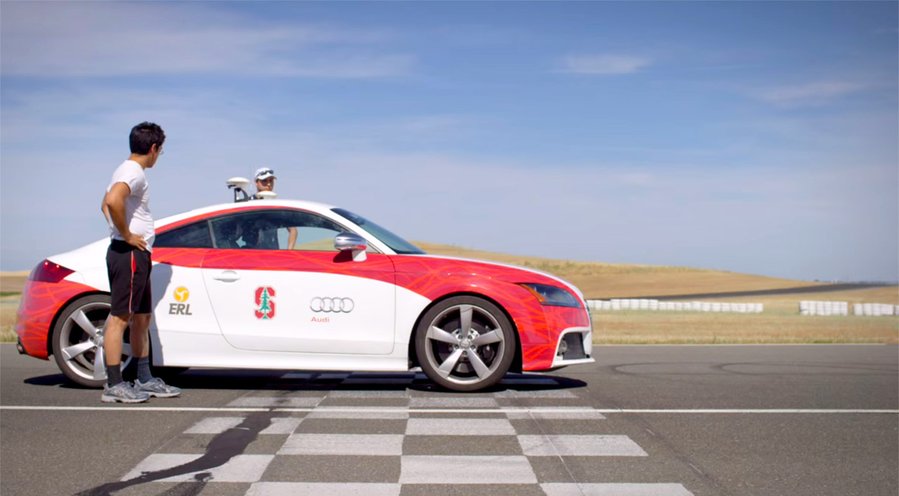But the students performing research with Stanford University's Audi TTS test rig "Shelley" (not to be confused with Audi's own self-driving race cars) are getting a kick out of the numbers generated by the machine. "A race car driver can use all of a car's functionality to drive fast," says Stanford Professor Chris Gerdes. "We want to access that same functionality to make driving safer."
The teams push the car to speeds over 120mph and the computers have executed lap times nearly as fast as professional drivers. However, they also spend a lot of time maneuvering at 50 to 75 mph, the speeds where accidents are most likely to happen. That way, the students can figure out how to incorporate braking, throttle and maneuvering to develop new types of automatic collision avoidance algorithms. Better technology, for instance, could have saved Google from a recent slow-speed accident where its vehicle was struck by a bus.
During race days, students break into teams to perform different types of research. "Once you get to the track, things can go differently than you expect. So it's an excellent lesson of advanced planning," says Gerdes. In the latest rounds of testing, for instance, one PhD student developed emergency lane-change algorithms, while another recorded a skilled human driver in an attempt to convert his behavior into a driving algorithm. The main goal, of course, is to prepare students for something they may not have expected -- an automotive industry that is adopting self-driving technology at breakneck speeds.

